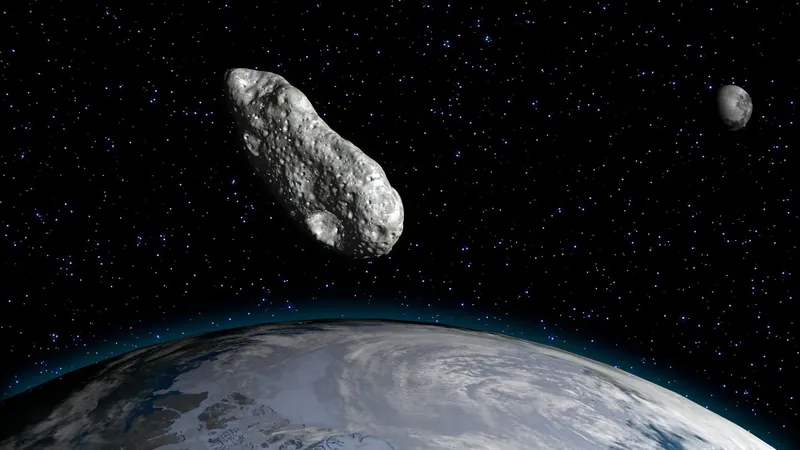
Massive Asteroid to Zoom Past Earth This Thanksgiving: What You Should Know!
2024-11-25
Author: Rajesh
Overview of Asteroid 2006 WB
A gigantic asteroid, designated as 2006 WB and measuring about 100 meters wide, is set to sweep by Earth on November 26, 2024, at a safe distance roughly 2.3 lunar distances away. This presents a unique opportunity for astronomers to examine the space rock, part of the extensive class of near-Earth objects (NEOs) that provide critical insights into the formation and evolution of our solar system.
Discovery and Characteristics
First spotted in November 2006 by the Catalina Sky Survey, asteroid 2006 WB has since been the focus of radar observations, notably at the Arecibo Observatory, which suggested it has a rotation period of approximately 8 hours, although this detail is still under investigation.
Observational Opportunities
As the asteroid approaches Earth, it is anticipated to brighten to about 13th magnitude, making it visible for astronomers to capture lightcurves and conduct vis-IR spectroscopy. This enhances our understanding of its surface composition and characteristics, which are vital for ongoing studies of NEOs, especially as we continue to monitor and track these celestial bodies.
Significance of NEOs
While 2006 WB is one of approximately 40,000 known NEOs, it poses no threat to our planet. Many NEOs serve as essential subjects for scientific scrutiny, enabling researchers to develop better models of asteroid dynamics and their interactions with Earth.
Related Astronomical Events
In a fascinating recent incident, another asteroid named 2024 PT5 briefly orbited Earth, momentarily acting like a 'mini moon.' While only about 10 meters in diameter, its temporary presence showcased the intricate gravitational dance between small celestial bodies and our planet. Such events deepen our understanding of the complexities of orbital mechanics and the influence of Earth’s gravity on nearby objects.
Conclusion and Observational Hints
This close encounter with asteroid 2006 WB this Thanksgiving offers an exciting glimpse into our solar system's dynamic environment. As scientists gear up for this celestial event, space enthusiasts and astronomers alike are eager to gather valuable data that may one day inform asteroid deflection strategies and planetary defense initiatives.
So grab your telescopes and prepare for a day of astronomical wonder on this remarkable flyby!



 Brasil (PT)
Brasil (PT)
 Canada (EN)
Canada (EN)
 Chile (ES)
Chile (ES)
 España (ES)
España (ES)
 France (FR)
France (FR)
 Hong Kong (EN)
Hong Kong (EN)
 Italia (IT)
Italia (IT)
 日本 (JA)
日本 (JA)
 Magyarország (HU)
Magyarország (HU)
 Norge (NO)
Norge (NO)
 Polska (PL)
Polska (PL)
 Schweiz (DE)
Schweiz (DE)
 Singapore (EN)
Singapore (EN)
 Sverige (SV)
Sverige (SV)
 Suomi (FI)
Suomi (FI)
 Türkiye (TR)
Türkiye (TR)